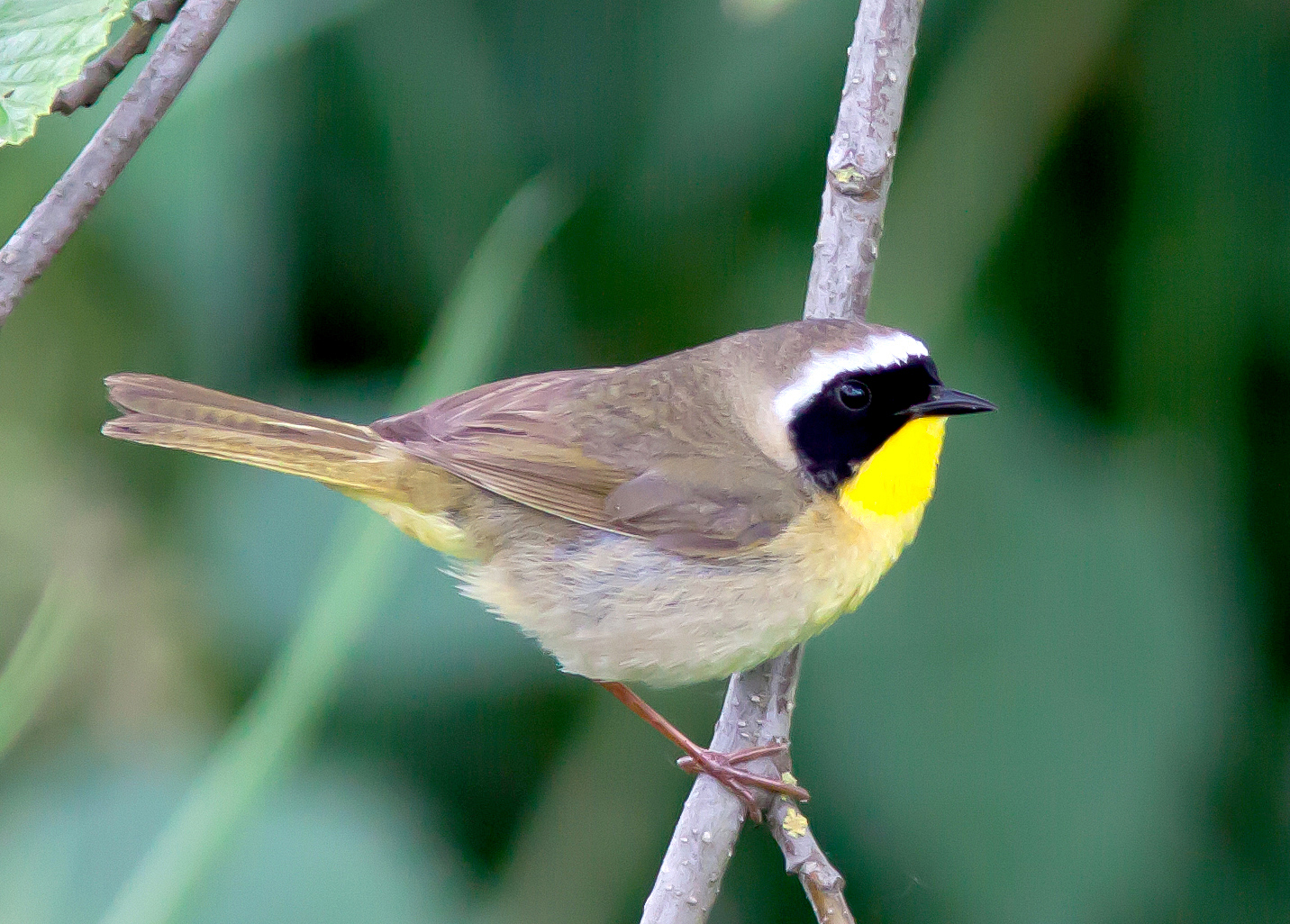Bird of the Month: Common Yellowthroat
By Andy McCormick
PC: Mick Thompson (Common Yellowthroat)
Scientific Name: Geothlypis trichas
Length 5 in
Wingspan 6.75 in
Weight 0.35 oz
AOU Band code COYE
“Abundant and well-known, the Common Yellowthroat has succeeded by being a nonconformist. As the only one of our warblers that will nest in open marshes, it is found in practically every reed-bed and patch of cattails from coast to coast” (Kaufman, p. 550).
The Common Yellowthroat does not mind getting its feet wet and will almost always be found close to water where it will forage in muddy areas for a wide variety of insects including damselflies, dragonflies, small grasshoppers, beetles, caterpillars, moths, flies and spiders. It is an active species and birders can get a full view of it when it sings witchity-witchity-witchity-wich from the top of a cattail or shrub to mark its territory. However, despite frequently singing, the yellowthroat can also be very difficult to see as it skulks in the lower and thicker parts of its habitat. Its behavior has been compared to that of a wren and it will often cock its tail.
The male yellowthroat has a dramatic black mask set off by a white border above and a bright yellow throat below. The crown and back are olive. The female has no mask and a smaller yellow throat patch, and is well-camouflaged in shades of olive and brown. In late summer juvenile males will have some black on the face as a precursor to a mask which will molt in the spring.
The Common Yellowthroat is in the genus Geothlypis, earth finch, from the Greek, ge, earth or land, and the obscure thlupis, a type of finch (Holloway). Of course, we now know that the bird is not a finch at all. The species name trichas, is also from the Greek, trikhas, the song-thrush, and we also know that the bird is not a thrush. So what is a warbler? According to Dunn and Garrett warblers are better referred to as wood-warblers to avoid confusion with Old World warblers which are related to thrushes. Wood-warblers are found only in the New World and are, “small, primarily insectivorous songbirds” (Dunn & Garrett). The most recent DNA testing indicates they may be most closely related to blackbirds.
Yellowthroats arrive in Washington in mid-April. The female will build an open cup nest close to the ground and made from grasses, sedges, various weeds and leaves, and lined with fine grass and some hair. Usually 3-5 creamy white eggs with brown spots are deposited. Only the female incubates for 12 days and the male will feed her during this time. Hatchlings are fed by both parents and leave the nest in about 10 days. Some pairs can have two broods per year (Kaufman).
Fall migration for the yellowthroat is casual with some birds lingering in northern areas into October. The species is so widespread that yellowthroats will use all four North American flyways. Western birds are likely to use the coastal aspect of the Pacific flyway and winter in Mexico and Central America.


